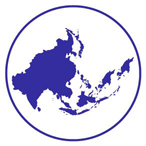Presentation Title
How Epidemics, Child Mortality and War Brought Public Health to Republican China
Location
RCC 202
Start Date
11-10-2013 10:00 AM
End Date
11-10-2013 12:00 PM
Abstract
Republican China is generally regarded as a period during which warlords prevailed until displaced by civil war and foreign invasion. This political lens understandably influences our thinking. But from an epidemiological perspective a parallel story emerges in which the key negative forces are armies of microbes and parasites, disease gods and demons, dangerously unhygienic traditional midwives, and armies and generals indifferent to the value of ordinary lives.
This presentation focuses on the epidemiological as well as military crises of Republican China during 1920-1945 and the efforts by highly trained medical and public health specialists to mitigate these crises. These specialists are found in both the civilian and military sectors. By focusing on preventive strategies they found ways to lessen the impact of gastrointestinal diseases, smallpox, typhus and malaria, and to train and organize thousands of healthcare workers to teach hygiene and sanitation and administer prophylactic treatments. Coping with disease gods and traditional midwives proved more challenging, but both Nationalist and Communist health leaders made considerable progress in improving delivery of military healthcare.
After war came in 1937, Japanese bombs and bayonets took their toll, as did the errors of Nationalist China’s leaders, so that Nationalist China ended the war weakened by widespread army malnutrition and a conscription system wasteful of human life. But by then thousands of trained healthcare workers were available to serve the needs of postwar China.
How Epidemics, Child Mortality and War Brought Public Health to Republican China
RCC 202
Republican China is generally regarded as a period during which warlords prevailed until displaced by civil war and foreign invasion. This political lens understandably influences our thinking. But from an epidemiological perspective a parallel story emerges in which the key negative forces are armies of microbes and parasites, disease gods and demons, dangerously unhygienic traditional midwives, and armies and generals indifferent to the value of ordinary lives.
This presentation focuses on the epidemiological as well as military crises of Republican China during 1920-1945 and the efforts by highly trained medical and public health specialists to mitigate these crises. These specialists are found in both the civilian and military sectors. By focusing on preventive strategies they found ways to lessen the impact of gastrointestinal diseases, smallpox, typhus and malaria, and to train and organize thousands of healthcare workers to teach hygiene and sanitation and administer prophylactic treatments. Coping with disease gods and traditional midwives proved more challenging, but both Nationalist and Communist health leaders made considerable progress in improving delivery of military healthcare.
After war came in 1937, Japanese bombs and bayonets took their toll, as did the errors of Nationalist China’s leaders, so that Nationalist China ended the war weakened by widespread army malnutrition and a conscription system wasteful of human life. But by then thousands of trained healthcare workers were available to serve the needs of postwar China.

Comments
Presentation is included in Panel 2: Health, Wellness and Crime in China and Korea